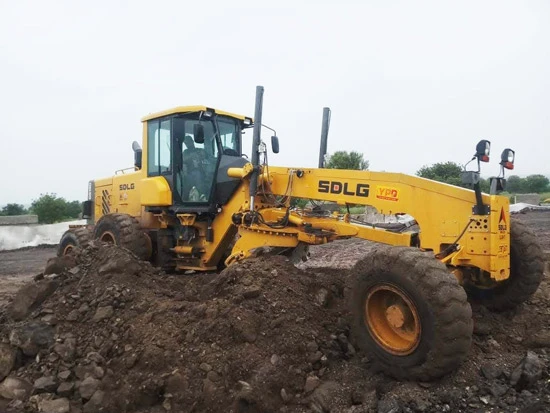Utility companies face unique challenges when maintaining infrastructure across diverse environments. From power line maintenance to water system repairs, these operations require versatile and reliable equipment. Wheel loaders have become increasingly popular in the utilities sector, offering distinct advantages while also presenting certain limitations. Let’s explore the pros and cons of deploying wheel loaders for utility work.
Advantages of Wheel Loaders in Utility Operations
Versatility Across Multiple Applications
Wheel loaders shine in utility work due to their remarkable versatility. With the right attachments, a single wheel loader can perform numerous tasks:
- Material handling for pipe laying and cable installation
- Snow removal from access roads and substations
- Vegetation management around power lines and water facilities
- Debris clearing after storms or maintenance work
- Trench backfilling during repair operations
This multi-functionality reduces the need for multiple specialized machines, offering significant cost savings for utility companies with diverse operational needs.
Mobility and Speed
The ability to travel quickly between work sites gives wheel loaders a distinct advantage over tracked equipment. Utility emergencies often require rapid response across a service territory. Wheel loaders can:
- Travel at speeds up to 25 mph on improved surfaces
- Navigate both paved roads and rough terrain
- Quickly relocate between multiple work sites without specialized transport
This mobility proves especially valuable for utilities covering extensive service areas where rapid deployment can prevent service interruptions.
Operator Comfort and Visibility
Modern wheel loaders offer superior operator environments, which is crucial for utility work that often involves long hours in challenging conditions:
- Climate-controlled cabins protect operators from extreme weather
- Ergonomic controls reduce operator fatigue during extended operations
- Excellent visibility enhances safety when working near sensitive infrastructure
- Reduced noise levels compared to some alternative equipment
The comfort advantage shouldn’t be underestimated, as it directly impacts operator productivity and safety during critical utility repairs or maintenance.
Lower Surface Impact
Utility work frequently occurs in sensitive areas where minimizing ground disturbance is essential. Wheel loaders offer:
- Less surface damage than tracked machines on finished surfaces
- Lower impact on residential landscapes during urban utility work
- Reduced restoration costs after project completion
When working in developed areas with landscaping or finished surfaces, this characteristic can significantly reduce project costs and improve community relations.
Limitations and Challenges
Stability Constraints
While wheel loaders excel in many utility applications, they face certain stability limitations:
- Less stable than tracked equipment on steep slopes or uneven terrain
- More susceptible to tipping when handling heavy loads at extension
- May struggle in extremely soft or waterlogged ground conditions
These limitations require careful operation planning, especially in challenging terrain where an excavator SDLG might offer superior stability for certain tasks.
Excavation Capabilities
When deeper digging is required, wheel loaders show their limitations:
- Restricted digging depth compared to purpose-built excavators
- Less precise excavation control for delicate work around existing utilities
- Limited reach for below-grade operations
For utilities requiring extensive excavation, complementary equipment or regular Excavator service becomes necessary to supplement the wheel loader’s capabilities.

Specialized Attachment Considerations
While attachments increase versatility, they also present challenges:
- Additional investment costs for specialized utility attachments
- Storage and transport requirements for multiple attachments
- Time required for attachment changes during operations
- Hydraulic capacity limitations for power-hungry attachments
Utility companies must carefully evaluate their operational requirements to determine which attachments deliver sufficient value to justify these additional considerations.
Size Limitations in Urban Settings
Utility work in densely developed urban areas may present challenges for standard wheel loaders:
- Access restrictions in narrow alleys or between buildings
- Workspace constraints in congested utility corridors
- Increased traffic disruption during operations
- Difficulty maneuvering around existing infrastructure
Compact wheel loader models address some of these concerns but typically offer reduced capacity and capability compared to their larger counterparts.
The SDLG company Advantage in Utility Applications
Many utility companies have found value in SDLG wheel loaders for their operations, citing several key benefits:
- Competitive acquisition cost allowing for fleet expansion
- Simplified maintenance requirements ideal for utility company maintenance programs
- Robust design that withstands the demanding conditions of utility work
- Purpose-built configurations for specific utility applications
- Strong parts availability reducing downtime during critical operations
These advantages make SDLG wheel loaders particularly attractive for utilities operating with constrained equipment budgets while requiring dependable performance.
Making the Right Equipment Choice
When evaluating wheel loaders for utility operations, consider these key factors:
- Primary application analysis – Identify the most frequent tasks the machine will perform
- Terrain assessment – Evaluate the typical working environments in your service territory
- Attachment requirements – Determine which attachments are essential for your operations
- Transport considerations – Assess how the machine will be moved between work sites
- Budget realities – Balance acquisition costs against long-term operational expenses
Many utility companies find that a mixed equipment approach works best—utilizing wheel loaders for their strengths while maintaining access to specialized equipment for situations where wheel loaders face limitations.
Wheel loaders offer compelling advantages for utility operations, particularly in scenarios requiring versatility, mobility, and reduced surface impact. However, they aren’t without limitations in stability, excavation depth, and urban access. By understanding these pros and cons, utility companies can make informed equipment decisions that optimize operational efficiency while controlling costs.
The ideal approach often involves strategic deployment of wheel loaders for appropriate applications while maintaining access to complementary equipment like excavators for specialized tasks. This balanced strategy allows utility companies to leverage the best attributes of each equipment type while minimizing the impact of their respective limitations.

